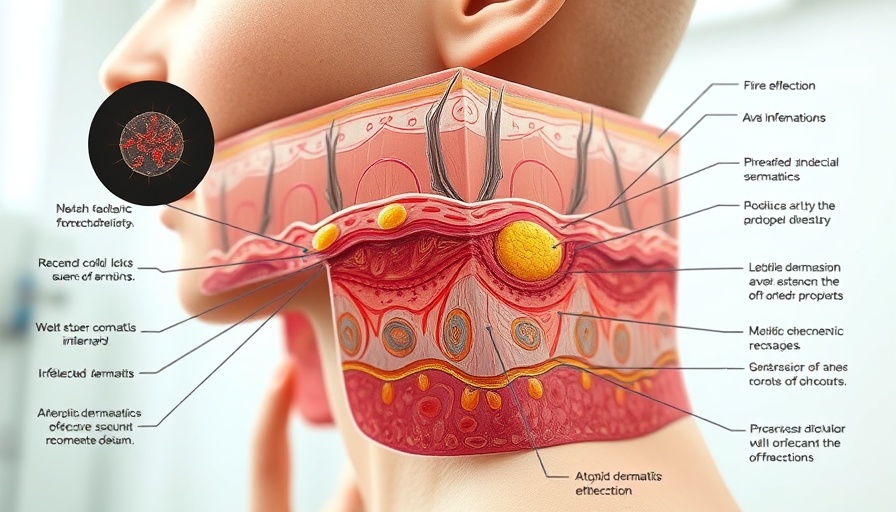
Understanding the Connection Between Alopecia Areata and Atopic Dermatitis
A recent study highlighted in the Daily Derm Times has unveiled a concerning link between severe alopecia areata and an increased risk of atopic dermatitis, particularly in adolescents. These findings underscore the importance of recognizing how interrelated various skin conditions can be, especially as they affect younger populations. For parents and caregivers, understanding this link is vital in managing children's skin health more holistically and can prompt discussions with dermatologists about appropriate interventions.
FDA's Commitment to Transparency: A Look at 200 Complete Response Letters
In a move to enhance transparency, the FDA has released over 200 Complete Response Letters (CRLs), providing clarity on the drug approval process. This initiative is reassuring for individuals interested in the latest treatments, showcasing the commitment of regulatory bodies to ensure safety and clarity in healthcare decisions. For practitioners and patients alike, these disclosures could guide conversations around continuing care and treatment accessibility in dermatology.
Revolutionizing Pediatric Atopic Dermatitis Care with Dupilumab
Dupilumab is emerging as a groundbreaking solution for pediatric atopic dermatitis, dramatically improving not only skin symptoms but also overall quality of life for children. As described by Christopher Bunick, MD, PhD, this systemic therapy encourages early intervention and emphasizes the multi-faceted approach required to manage chronic skin conditions effectively. Parents exploring treatment options now have a potent tool that acts on multiple pathways of this challenging condition.
The Launch of Zelsuvmi: A New Era in Home Treatment
Zelsuvmi represents a significant advancement in at-home dermatological care, being the first FDA-approved topical gel for treating molluscum contagiosum for patients aged one and older. This innovation allows families to manage a common skin infection conveniently, marking a shift toward more accessible treatments that align with today’s digital health trends. The ability to handle certain conditions at home not only empowers patients but also reflects ongoing advancements in cosmetic and therapeutic dermatology.
Evaluating Tildrakizumab in Vitiligo Treatment
Despite initial hopes, recent trials of tildrakizumab, an IL-23 inhibitor, have shown no significant improvement in the Vitiligo Area Severity Index (VASI). This outcome emphasizes the critical need for further research into effective treatments for vitiligo, an often frustrating condition for patients. Dermatologists will be keen to explore alternative solutions as this area of study develops, and for patients, understanding these trends may inform their treatment choices in the future.
Why Staying Informed Matters in Aesthetic Medicine
In an age where non-invasive treatments are continually evolving, staying abreast of the latest advancements in aesthetic medicine is essential. From injectable fillers and laser treatments to topical innovations in skin care, informed consumers can make better decisions regarding their beauty and wellness routines. Exploring science-backed data enables both practitioners and patients to take proactive measures towards achieving desired aesthetic outcomes.
These insights into dermatology not only advance clinical understanding but also empower individuals to engage more actively in their health and wellness journeys. By remaining informed, patients can navigate the landscape of skincare and aesthetic treatments more confidently.
 Add Row
Add Row  Add
Add 

 Add Row
Add Row  Add Element
Add Element 




Write A Comment